Leaf is a game of simple actions and complicated choices
In Leaf, a forest-themed and environmentally friendly game from Tim Eisner and Weird City Games, the players will use cards to place leaves and build an expansive tapestry that represents a forest floor during fall (or Autumn, as we call in the UK). Each connection between leaves will yield a benefit — whether growing mushrooms, moving a friendly squirrel, or drawing animal or leaf cards.
Leaf is a really beautiful game that feels especially thematic at this time of year. I look out of my window and my whole yard is coated in leaves ranging from green and red to yellow and brown — exactly as they do in Leaf. Whilst those in my garden don’t have the same orderly placement as those laid out on the table, it feels lovely to experience a game that so directly represents its theme visually.
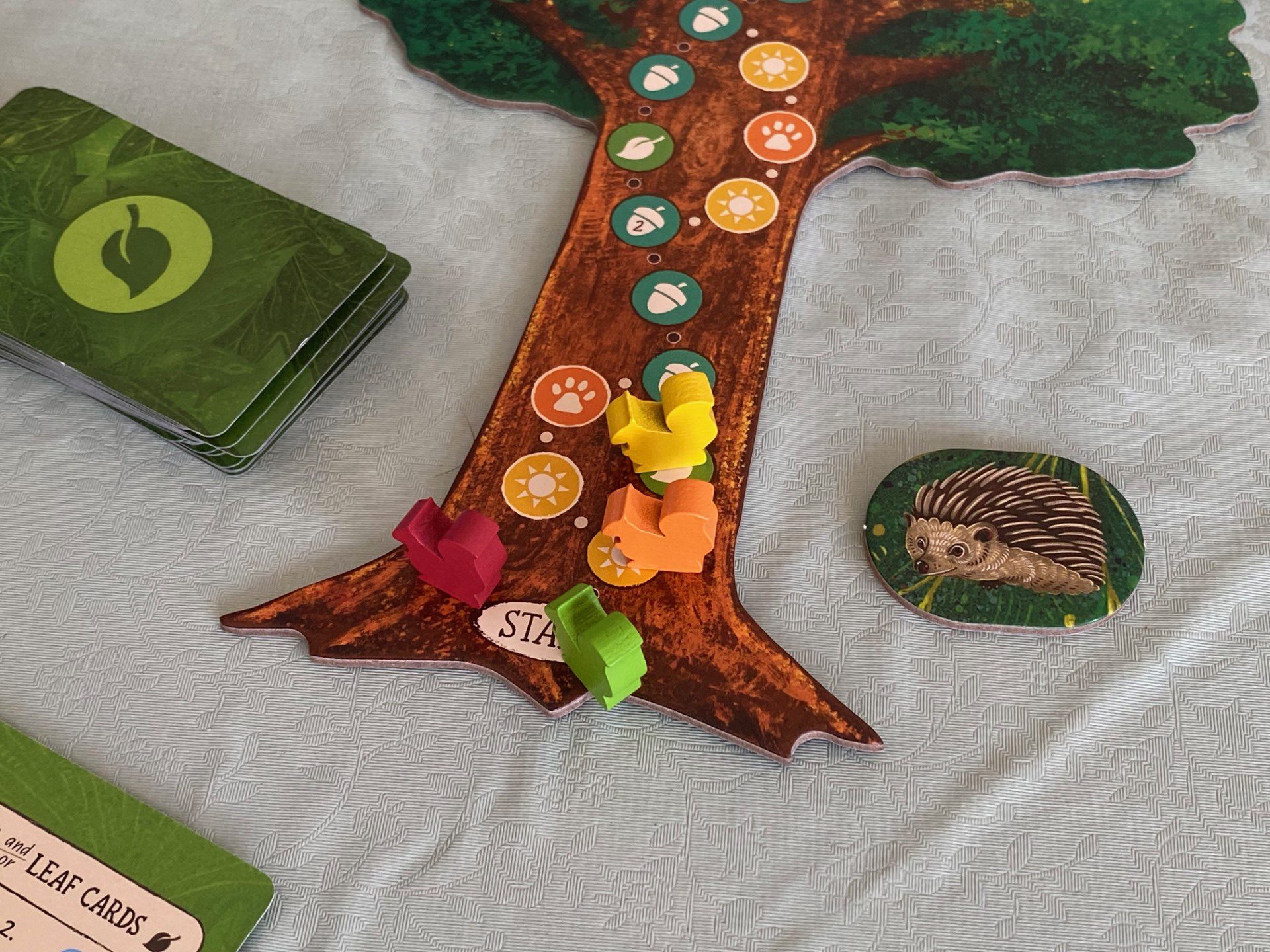
This is also a clever game, with a very simple action driving every turn and allowing players to observe the consequences as part of the learning process. Rather than teaching Leaf, you should simply start playing it — pick one of your three cards, place it on the table, take a leaf that matches that colour and use it to make connections (at the points that follow the veins of the leaf) with other leaves. Now all you need to do is take the actions associated with those connections.
Connecting to a green leaf is simplest, and this action simply allows the player to draw a new leaf card (replenishing their hand with a new option). The yellow action is nearly as simple, but you’ll need to understand why you’re doing it, and that is simply to take a sun token. The red action is to place a mushroom on any leaf, or to grow an existing mushroom to an adult size. The brown action allows the player to move their squirrel token up the tree, and the final, orange action allows means they can claim an animal card from those available.
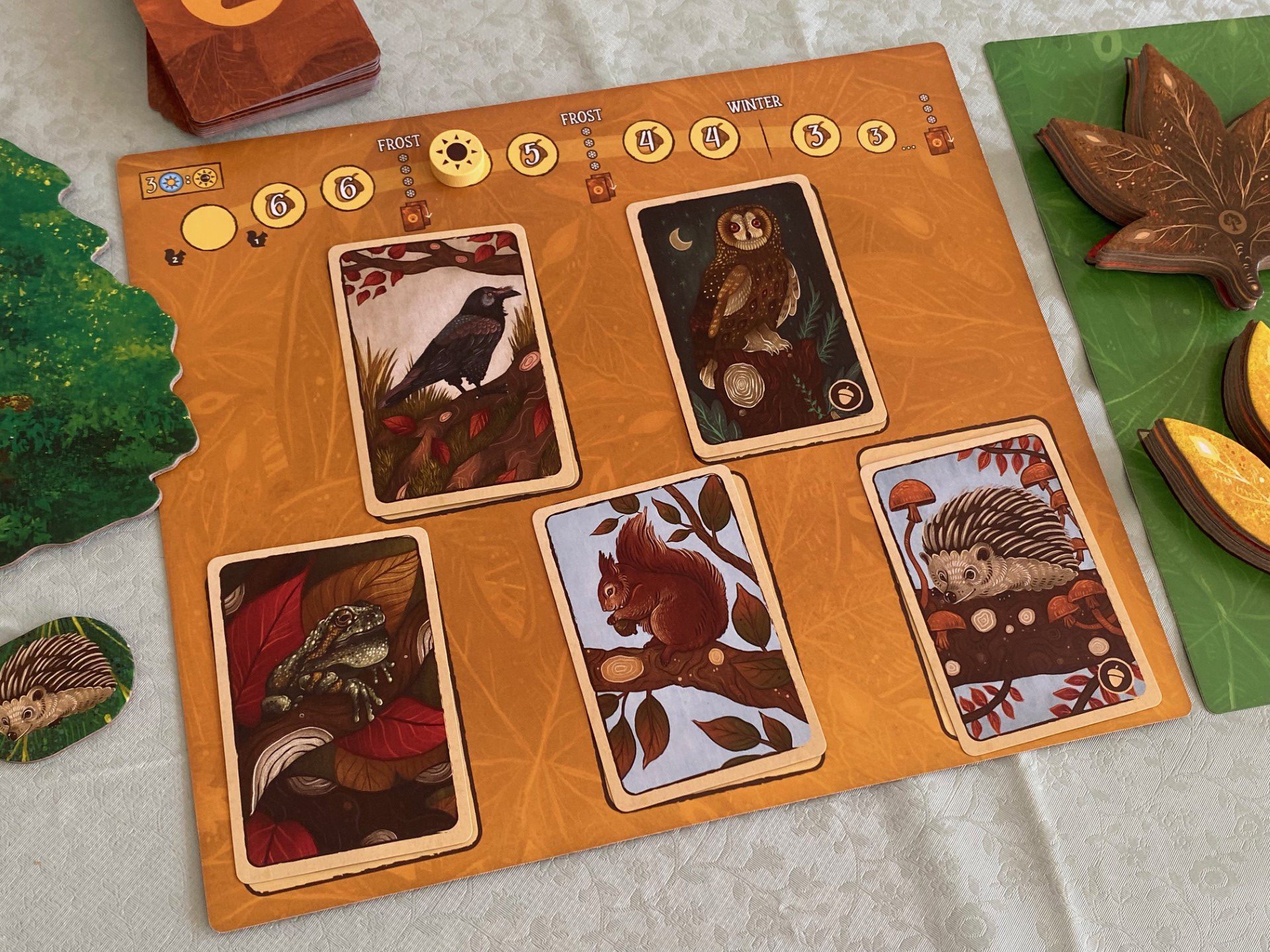
I know what you’re thinking — two paragraphs ago I said this was a simple game, and then I immediately listed a load of complicated things. Yeah, that’s kind of true — and that’s the real beauty of Leaf. You just take one quick, simple action, but the consequences of that action need to be carefully considered.
For context, let me explain a few things about the actions I just mentioned above. We’ll start with mushrooms (no, not that kind — stay with me here). Mushrooms on leaves generate sun tokens (for the mushroom grower) whenever an opponent makes a connection to the leaf that has the mushroom on it. Adult mushrooms generate points — especially if placed in groups of exactly three. Four, five or six is better, but two separate groups of three would be worth more than six mushrooms altogether.
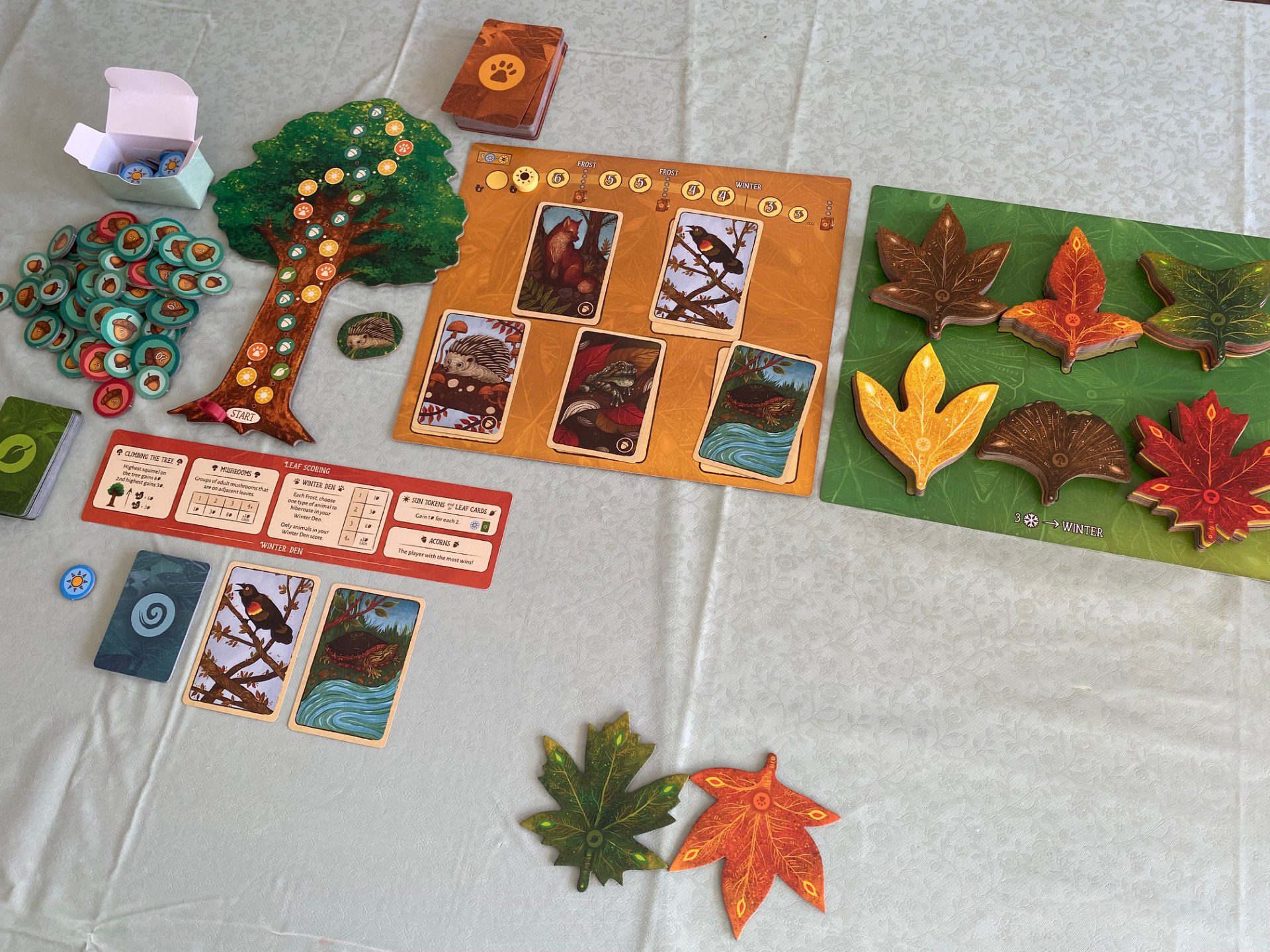
Next, let’s cover the animal cards. These cards are presented in a face-up “market” for players to choose from, and will simply be collected and placed above your player board when taken. Animals score no matter how many you have, but like mushrooms, the more you have, the better. Only animals which have hibernated will score though, and this is linked to the changing of the seasons.
To explain seasonal change in Leaf, let’s cover sun tokens and why you want them. Three sun tokens can be spent to advance the season closer to the next frost — and advancing the season will always generate points for the player who is doing so. Also, when the frost line is covered, all players must choose one animal type to hibernate — and in doing so they will move all of the animals of that type below their board (to show that they are hibernating).
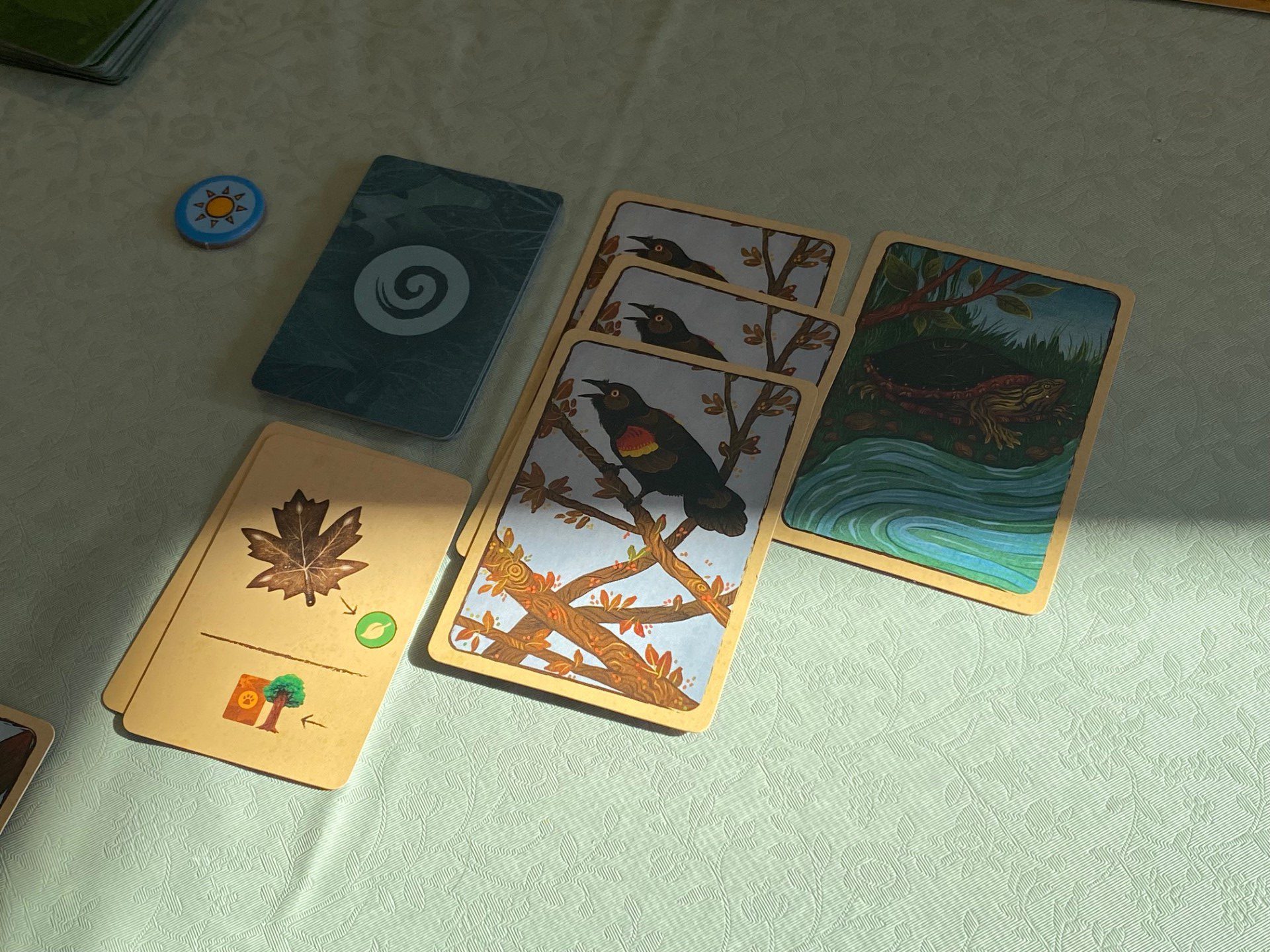
When the squirrel action is taken, the player will move their squirrel up the tree one space at a time — taking the benefit on each space, but “skipping” any spaces with opposing players on. Benefits on the tree include acorns (which are points) as well as sun tokens and the chance to take animal cards. This is arguably the simplest action to be honest, being a bit of a catch all to help players get specific resources if they have no other way to do so.
I’ve already said that one of the things I love about Leaf is how simple it is to get up and running, but I also love that the emergent depth of these various actions leads to long-term strategic thinking. Players will — and should — just try things out during the first few games, seeing how connections work, understanding how the game progresses and how to dictate the pace (or what happens when you have it dictated to you, which can be a problem.)
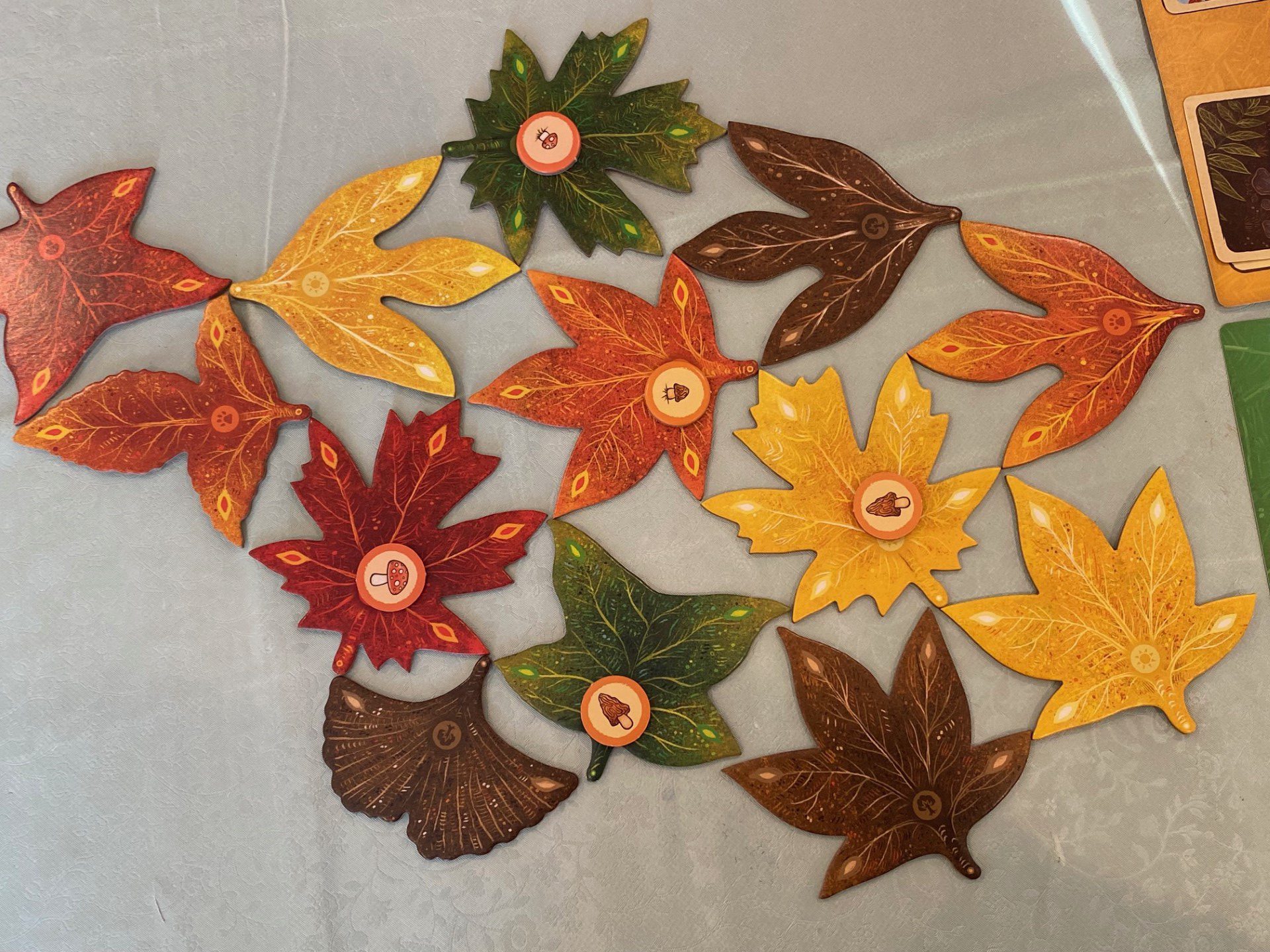
After a few games though, players will be considering their actions much more carefully. They’ll be taking animal cards to prevent their opponents from getting them, blocking spaces on the tree and placing their leaves with a real focus on what will score them the most. At the same time, the mushroom growth and the fact that you’re building a communal tableau gives Leaf a collaborative, almost friendly feel.
Leaf probably isn’t for absolutely everyone, but if you like a nature theme, and your game group has players who like games that are on the heavier end of light (perhaps just straying into the medium) then it could well be for you. It’s easy to teach and to remember between games, and it rarely lasts longer than an hour so it can quickly become a staple game to start or end an evening. Regardless, Leaf is a really pretty game, a solid design and something worth checking out.
You can purchase a copy of Leaf from their Kickstarter.
Love board games? Check out our list of the top board games we’ve reviewed.
Comments are closed.